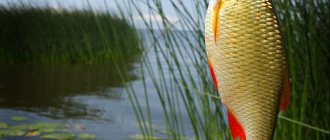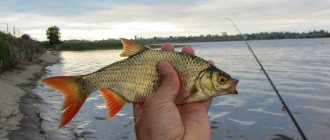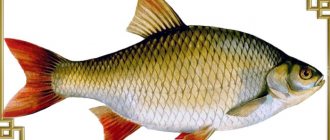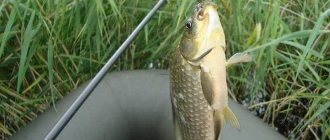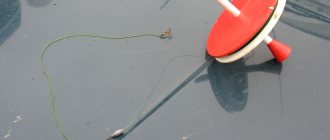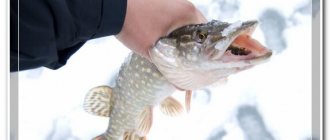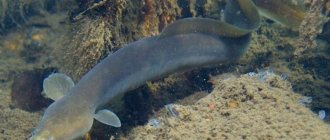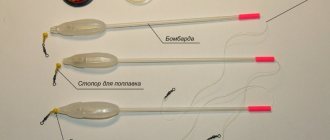Buy quality products at affordable prices in the best fishing online stores
. Give gifts to yourself and your loved ones!
we are in social networks
— subscribe to us on Facebook, Youtube, VKontakte and Instagram. Stay up to date with the latest site news.
Golden fish with scarlet fins can be caught well not only with a donkey and a float rod, but also with a spinning rod. Fans of spinning fishing in the summer successfully catch redfin with ultralight spinning rods and light baits: spinners, wobblers, silicone baits. In this article we will find out which spinning rod is suitable for such fishing, in what places to look for large rudd and what baits are best to use.
When and where is the best time to catch rudd using a spinning rod?
Peak activity of rudd occurs during the non-summer months and May. It is also caught well in September, if it is warm like summer. This is clearly visible on the rudd biting activity graph:
Rudd loves coastal areas where there is a lot of vegetation. Filamentous algae often grow on the bottom. This is a good food base for rudd. Classic places for this fish are toadweeds, bays, lakes and sections of rivers with a slow flow, where there is a lot of pondweed, reeds, water lilies and other vegetation.

During the hot summer and late spring, rudds gather in small flocks. Moreover, in one flock there are often individuals of different sizes. The fish slowly move across the entire area of a certain area. During hot hours, they move closer to the bottom, towards the algae. In summer, rudd stay close to the shore. Therefore, it is convenient to catch them using float tackle and light spinning rods.
Floaters know that rudd bite well at the border between algae and a clean bottom. It enters the algae during the hottest hours. Therefore, when guiding, it is better to go through the grass and focus on the places where it ends. Pause and or jerk so that the bait flies up and then slowly falls. The rudd reacts to such tricks with decisive bites.
When the object being fished is located at a distance of 0.5-0.8 meters from the bottom, then it is good to catch it with a twister 2 cm long with a jig weight weighing 2-3 grams. In this case, jig wiring is used. It is especially good to fish this way from a boat among water lilies. The bait is delivered to the window and jigging is performed in this area. Active play provokes the rudd to bite. Often on summer days you come across bonuses weighing 300 grams or more.
At the end of summer and in September, rudd increasingly visit areas with a clear bottom far from the shore. Large schools of fish can be found at a distance of 30-50 meters from the shore. At this time, many feeders and bottom fishers catch golden beauties at a distance of 30 meters from the shore. Moreover, the fish greedily takes maggots, worms and bread.
Rudds are often found in the upper and middle layers of reservoirs. On a sunny day, if you look closely, you can see movements on the surface of the water. Most likely, these are flocks of rudd. In such cases, experienced fishermen cast the bait a little further than the “moving spot” and then perform a slow retrieve perpendicular to the shore. In such situations, a rudd can, without hesitation, attack a spinner passing a meter away from it.
Fishing with a float rod
The thinnest and lightest fly-type and Bolognese-type fishing rods made of composite materials in a telescopic assembly are suitable for fishing conditions, which do not load the angler’s hand with high weight. Depending on the bait supply distances, fishing rods will be used in 4–9 meter lengths.
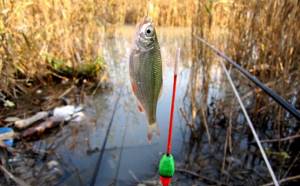
Speaking of bologna, its package includes a lightweight, inertia-free reel, without special requirements for traction force, fineness of clutch adjustment and gear ratio. The main thing is low weight and a spool for storing 50 meters of monofilament with a diameter of 0.12 to 0.18 mm. The fly tackle is not equipped with a reel at all, but the fishing line is tightly secured at the very tip of the tackle. The tackle for rudd is equipped with a float of 0.5 or a maximum of 2 grams, such as a waggler with a single mount and a noticeable to the eye, but thin and bright antenna. The sinkers are lead pellets with a slot for clamping the fishing line. For the subtlety of the tackle, I place them scattered along the line, without concentrating them strictly at one point with a garland.
Leashes are used in direct connection with the main fishing line, using a tiny sub-line for sensitivity. The size of the hooks is selected according to the bait in the range of numbers 14–18 based on the generally accepted classification. The fish bites when the float is pulled under the water, without first testing the bait or playing with the bait. When a float sinks, the fisherman hooks the fishing line in the opposite direction and lifts the trophy out of the water using a form. A missed bite can result in the hook getting caught in the baited fishing line in thick algae.
Spinning rod equipment for catching rudd
We will need an ultralight 1.8-2 meters long with a dough of up to 6 grams. This is a classic parabolic, which is comfortable for fishing at short distances up to 30 meters. Fishing with such a rod is a great pleasure. Rudd is quite a fast fish. During fishing, it provides a certain resistance, and the spinning rod will bend along its entire length.
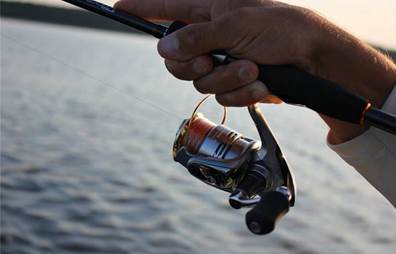
On the spinning rod we will put a light reel with a front drag with a spool capacity of 1500. The spool can have either a line with a cross-section of 0.2 mm or braid with a diameter of 0.1 mm. A breaking load of 3 kg is more than enough. Often near the shore there may be poplar fluff or grass on the surface of the water. All these troubles fall on the fence, then the tulip gets clogged on the rod. The fishing line passes such obstacles better, and fluff does not accumulate in such quantities as on the fence. In any case, on such fishing you should have two spools. We wind a fishing line on one, and a braid on the other. We do not use leashes when fishing for rudd.
To catch rudd among underwater vegetation, a split-shot rig is often used. It looks like this:

A Cheburashka weight is taken and tied to the main fishing line. A fluorocarbon leash with a cross section of 0.22 mm and with a bait at the end is tied to the second end. Usually floating silicone or foam fish are used. During retrieving, the load goes along the bottom, and the bait floats above it. The length of the leader determines the distance between the bait and the bottom. It happens that the rudd stands in the lower horizon. In this case, short leashes 15-30 cm long are used. If the fish is kept in the middle and upper layers, then leashes 30-80 cm long are used.
Accessories
Since fishing is usually a casual activity, you need to take care of a light and durable wading suit that will allow you to fish comfortably in extreme heat.
When fishing for rudd using a spinning rod, polarized glasses are required. Sometimes only with their help, when moving through grass thickets, it is possible to see a flock of rudd. And when fishing occurs on hot summer days, such glasses allow you to remove the glare of the sun on the water.
The large rudd is a strong and lively fish, it is difficult to pick it up with your hand, and it is also dangerous. With the next jerk of the fish, you can plant the hook in your hand. Therefore, it is necessary to have a lipgrip or trout landing net. In this case, you won’t get your hands dirty with mucus, you’ll cause less damage to the fish, and the risk of ending your fishing will be minimized.
When planning to fish large areas, you should put all your belongings in a backpack with an orthopedic insert, thereby distributing the load on your back evenly.
Catching large rudd using a spinning rod is extremely exciting and sometimes brings much more thrills than hunting for other fish. When the spinning rod bends in an arc, the fish makes “candles”, trying to return to its native element, the adrenaline in the fight against it goes through the roof, such moments are unforgettable. I wish every angler to experience these emotions, but be sure to adhere to the “catch and release” principle. Let the fish give you these sensations again on your next trips.
The best lures for catching rudd
Mepps turntables No. 0,1,2 have proven themselves well.
Rudd are more likely to bite on slow-moving baits. The wide blade of this spoon slows down the movement of the bait. The slow pace of the retrieve leaves the rudd more chances to attack. Some spinning anglers attach red threads to the tee, and the result is an animated bait that attracts fish better.
As mentioned above, silicone baits are very effective when fishing for rudd. In addition to the usual twisters, they use slugs, crustaceans, bugs and others. Silicones are good because they hang in the water column. In the same drop-shot rig, the silicone doesn’t just float. During a slow retrieve with pauses, it seems to float. You can do more jerks. In this case, the bait will slowly descend, and an active rudd will often attack it on the fly.
Many ultralight spinning anglers have small boxes in which they store silicones measuring 2-4 cm:
More and more artificial maggots, bloodworms and leeches are on sale. In summer, rudd responds well to these baits.
They are made of soft silicone and do not sink in water. You can plant several artificial maggots, leeches, and bloodworms. The worm is dressed separately. The method of fishing with these fall baits is very effective. Falling maggots or bloodworms create a stir among rudds.
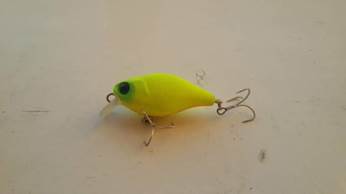
Wobblers and cranks are considered very good baits for fishing rudd. The best time to catch them is in late summer and early fall. At this time, the rudd's appetite awakens, and it actively attacks surface baits. The predator instinct plays a big part. Yes, rudd is still a bit of a predatory fish.
Tsurubito Baby Minnow 30
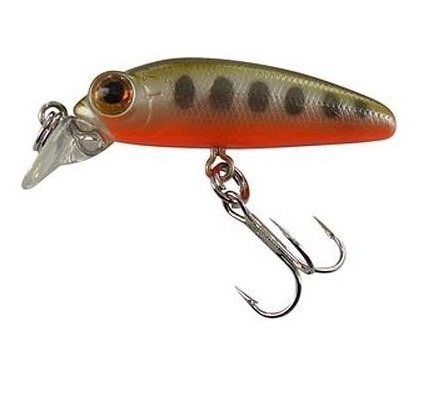
I took this baby specifically for rudd, and I was right! From the very first fishing trips on my “trump” casts, the wobbler began to methodically work on redfins. It was possible to get bites on it even when other wobblers were silent, and I quickly added it to my favorites. Now, when I find myself in unfamiliar places where rudd is found, I let it be the first to fight, and in 80% of cases I manage to catch a fish. Baby Minnow 30 responds perfectly to all types of wiring. If the bite is good, the most common uniformity is enough. If the fish is capricious, you need to start working with the bait in a jerky style. No need for tenderness - aggressive jerks are just that for this wobbler! The main thing is to remember to pause while wiring. It is on them that bites occur.
Groundbait as an effective attribute when catching rudd
This may seem strange, but when fishing with a spinning rod, bait is sometimes required. If it does not work on ordinary predatory fish, then in the case of rudd fishing, bait will be very useful.
In summer, the simplest bait will do. As a rule, fishing for rudd takes place in reservoirs without a current, so the composition of the mixtures is dusty. The priority is crackers with boiled millet or peas. Coconut powder and store-bought formulations are also used. Add chopped worms and maggots. Our task is to make a bait path. When fishing with a feeder and float gear, the bait is concentrated in one place, and in our case, small balls are thrown at different distances to spread the food along the length. The fish will gather on this path. When we carry out the wiring, at least one rudd will probably be interested in a spinner or silicone bait.
Before fishing, we feed several promising places and fish each one in turn. During the fishing process, you can add bait. The main thing is to see that it is useful and that fish are better caught after feeding.
Angling rudd on turntables
When fishing with spinners, perform a slow retrieve with short pauses. In warm weather, rudd can be caught well in different horizons. First we try to fish in the middle and upper horizons. If there are blows, then we are on the right track.
The spoon should be cast to the edge of the vegetation and should not be driven through the grass, but along it. Before fishing, it is important to tap the area well so that you get a clear picture in your head of how this “vegetative carpet” is located. On good days, the rudd does not allow even half of the retrieve to be completed, greedily attacking the spoon.
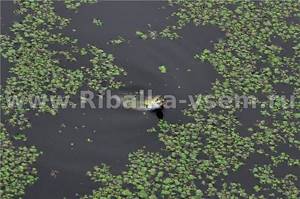
If a large specimen is caught on a tee, then it behaves quite noisily and scares away other fish. After fishing, it makes sense to move a little further and give this place a little “rest.” After 20-30 minutes you can return to it and successfully catch rudd again.
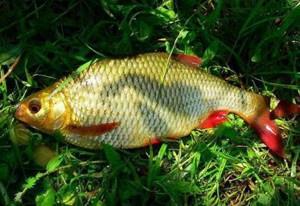
Sometimes the rudd first chases the lure and then attacks it near the shore. It is important to maintain the same pace, you can also take pauses. You should also properly slow down the movement of the turntable. It must be remembered that at a very low speed the spinner stops rotating and becomes ineffective. You shouldn’t just reel in the tackle when it’s within reach. At such moments a bite often follows. You can pull the spoon to the top layer of water, but so that the petal does not come to the surface. Often this technique leads to a rudd bite.
The rudd has fairly soft lips, like a roach. Therefore, it is detected easily. You should not make sudden movements. This could cause you to lose your trophy. Let it offer resistance, you can even release the clutch a little. The rudd gets tired quickly, and is then easy to bring to the shore.

It is not always possible to catch large or even medium rudd. It happens that a small fish ends up on a hook. In this case, you should not quickly reel out the tackle. The fishing process should be as quiet as possible so as not to scare away larger fish. It is better to fish at depth, slowly pulling it through the working area. After this, you can continue fishing, the school will not leave, and there will certainly be bites.
Recipes for making rudd baits yourself
Bait recipe No. 1. To prepare it you need to prepare:
- Corn - two hundred grams.
- Vanilla - two teaspoons.
- Honey - one tablespoon.
- Cinnamon – two teaspoons.
- Banana flavoring.
The cooking method looks like this:
- Pour cold water over the corn and leave to steep for a day.
- After this, drain the excess water and fill the corn with new water. Put on fire.
- Cook for forty minutes over low heat. It is important to stir the corn all the time so that the kernels do not burn. In addition, the corn should not be overcooked, otherwise it will not stick well to the hook. It's better to let it be a little hard.
- After the grains are cooked, they need to be cooled and excess water drained.
- Add honey, vanilla and cinnamon. Mix everything carefully.
- Immediately before fishing, add banana flavoring.
Store the nozzle in a tightly closed container for no more than two days. After this time, the attachment will lose its aromatic and taste qualities and will not be as effective.
Recipe No. 2. To prepare it you should take the following ingredients:
- Sunflower seeds – two hundred and fifty grams.
- Hercules - two hundred grams.
- Semolina - one glass.
- Millet – three hundred grams.
- Breadcrumbs - four hundred grams.
- Garlic – one clove.
- Dill - twenty grams.
- Vanilla - one teaspoon.
- Anise oil – ten drops.
- Pour water into the pan and bring it to a boil.
- Pour millet, semolina and oatmeal into the water.
- Cook for half an hour, slowly stirring the mixture.
- After this, strain the resulting porridge through a sieve and get rid of excess liquid.
- Leave the mixture to cool. After cooling completely, add breadcrumbs, dill and garlic. Mix everything well.
- Roast sunflower seeds and grind in a blender or coffee grinder.
- Add the crushed seeds to the mixture and mix again.
- Add anise oil and vanilla.
Use as bait for rudd. Store in a plastic bag or in the refrigerator. Throw into the water in small portions so as not to overfeed the fish.
Catching rudd with silicone baits
The most effective tactic for fishing for rudd is stepwise fishing in the lower and middle horizons. During the posting, pauses are made for 2-4 seconds. It depends on the depth. First, we ensure that the silicone extends across the entire horizon. Let's see at what depth the fish bite best. Having caught at what second the bite follows after the next stroke of a certain length, next time we repeat the same wiring.
We determine where the fish is and where it takes, and carry out wiring in this horizon. We also take into account the fact that twisters and vibrotails are very mobile baits and play well in the water. Such active play often attracts rudd. You can also use small bugs of this type:
The bugs are placed on an offset press with a soldered weight or on the same split shot. When they sink to the bottom, they imitate real beetles that accidentally fell from a tree. It is stepped wiring that is very suitable for such silicones. Hooks with soldered weights weighing 3-4 grams or jig heads of the same weight are often used. The rig with a jig head is basically a split shot.
If the rudd is in the bottom layer, then you can use tapping on the bottom. For this method, slugs, crustaceans and twisters are used.
Oil-colored lures, green and red, work well. It is better to use baits of natural colors.
All silicones can be scented with sprays. Rudd loves wormy, bloodworm and sweet smells. These scents work better in the summer. Try the worm first. If there are no bites for 10 minutes, then change to a sweet spray. Trying each spray one by one, we choose the one that the fish bites best on. The same tactics are used during feeder fishing. Make 3-4 casts of bait with one flavor, for example, garlic. If there are no bites, vanilla-flavored baits are used in the next casts. This way they determine the spray that will work today. It happens that for some reason the fish react better to the plum spray, although a day ago I only used chocolate baits.
In general, there is a reason to play around with different scents when fishing for rudd.
Fishing for rudd using wobblers, cranks, artificial flies
In summer, rudd often collects falling beetles and other insects from the surface of the water. This happens mainly in the morning and evening. Naturally, in such situations it is better to catch this fish with surface baits. These include artificial flies, beetle-shaped wobblers and crankbaits.
These microwobblers are good for catching large rudd:
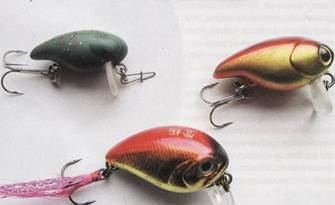
Often bright threads are tied onto the tees. This type of bait is more replaceable. The potbellied body of microwobblers makes them buoyant. It is best to use the usual tactics for fishing with wobblers, when a uniform, slow retrieve with pauses is performed. Casts are made into an area near grass and vegetation.
The same tactics are used when fishing with cranks. These are the same wobblers, only with a different body shape:
Artificial flies are just as effective. When fishing with these baits, slow retrieval with long pauses is used. They mainly fish close to the shore, as the casts are short due to the lightness of the flies.

